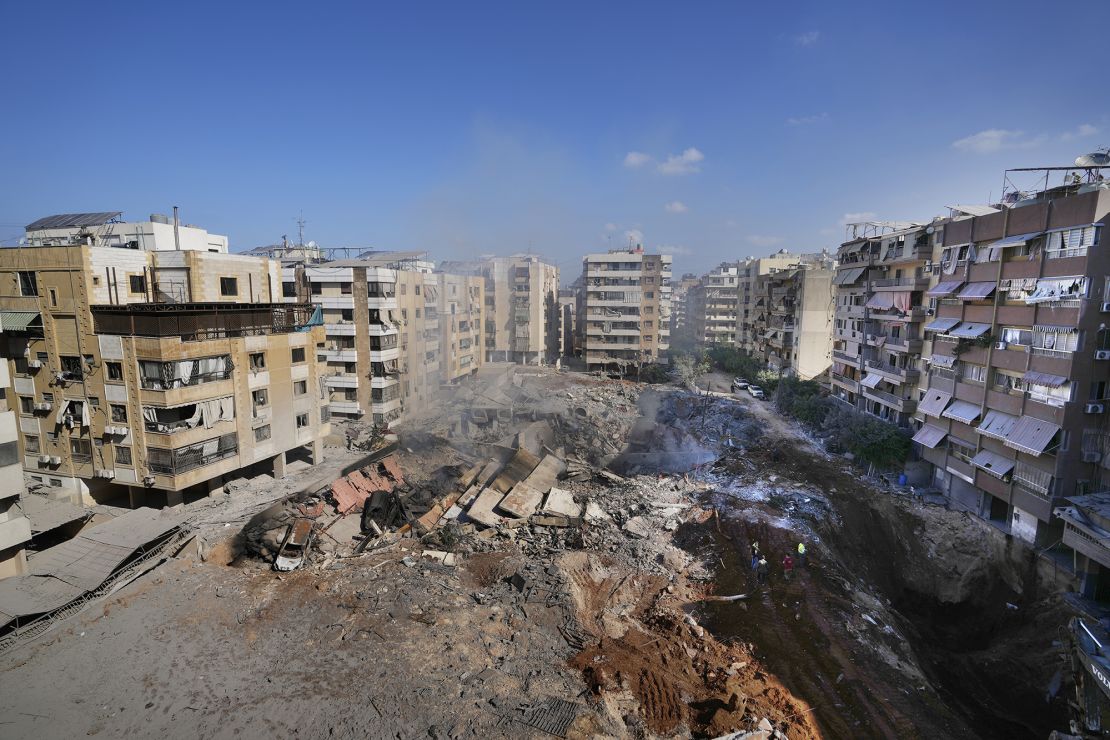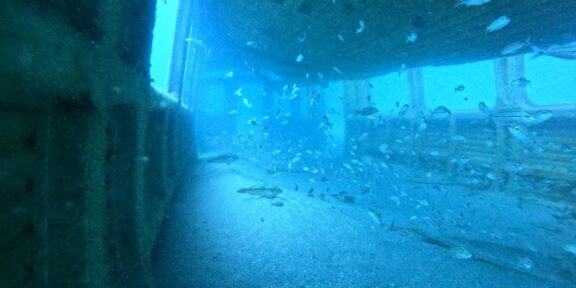CNN
—
American-manufactured 2,000-pound bombs had been probably used within the Israeli assault that killed Hezbollah’s chief, Hassan Nasrallah, in Beirut on Friday evening, in response to a evaluation of footage exhibiting the operation and its aftermath by CNN and munitions specialists.
A video revealed by the Israeli navy on Saturday confirmed jets it stated had been used to hold out the assault carrying no less than 15 2,000-pound bombs, together with the US-made BLU-109, in response to Trevor Ball, a former senior explosive ordnance technician for the US Military who reviewed the footage for CNN.
The bombs, identified colloquially as “bunker busters” for his or her capacity to penetrate deep underground earlier than they detonate, had been additionally fitted with the US-made Joint Direct Assault Munition (JDAM) – a precision steering equipment that converts unguided, or “dumb” bombs, into “good” munitions that may exactly strike a goal – in response to Ball. On one aircraft fitted with bombs, pictured taking off within the video, Ball recognized no less than 4 as BLU-109s with JDAM kits.

Different sorts of massive bombs could have been used within the operation, Ball added, however solely the BLU-190s had been seen within the footage. The munitions include 535 kilos of explosives, considerably lower than MK84s, one other sort of two,000-pound bomb often utilized by the Israeli navy. “BLU-109s hand over explosive weight to have the ability to penetrate targets higher than a MK84,” Ball stated.
Video and imagery that CNN geolocated to the scene of the assault in Beirut’s southern suburbs, often known as Dahiyeh, present a big, deep crater, surrounded by rubble from the destroyed buildings. A CNN evaluation of video and satellite tv for pc imagery confirmed 4 multistory residence buildings had been leveled within the assault.

Two senior Israeli protection officers informed the New York Occasions that 80 bombs had been used within the assault on Nasrallah. Ball informed CNN that quantity was believable however that it was tough to inform based mostly on obtainable imagery of the crater alone. “It’s attainable there have been extra comparable craters that the constructing particles collapsed into and crammed. It’s additionally unknown how deep and in depth any underground services had been. That makes it extraordinarily tough to reliably estimate the variety of munitions used,” he stated.
Justin Bronk, a senior analysis fellow for air energy and know-how on the Royal United Providers Institute in London, who additionally analyzed footage for CNN, stated that the Israeli Air Drive planes had been carrying JDAM steering kits, and that the crater left behind following the strike was in keeping with the usage of 2,000-pound BLU-109 bombs.
“[It] suits with the strike profile and the penetrating fuze settings and huge warhead required to provide that type of crater,” Bronk stated. He added that the mix of BLU-109 bomb and JDAM equipment had been “what you’d anticipate for going after a buried, hardened goal like that.”
The Israeli navy didn’t launch footage exhibiting the second it dropped the bombs, however movies circulating on social media on Friday confirmed large explosions in Dahiyeh, the place the strike was carried out on Nasrallah’s underground headquarters. Bronk informed CNN that the quite a few smoke plumes seen in one of many movies was in keeping with a number of near-simultaneous impacts of two,000-pound bombs, which have fuzes set to detonate underground.
Addressing reporters Saturday, Brig. Gen. Amichai Levin, commander of Israel’s Hatzerim Airbase, stated that “dozens of munitions hit the goal inside seconds with very excessive precision,” including that was what was “required to hit this deep underground.”
The Israeli navy has repeatedly used 2,000-pound bombs throughout its lethal marketing campaign in Gaza. Weapons and warfare specialists blame the in depth use of such heavy munitions for the large dying toll.
Israel’s marketing campaign in Gaza has killed greater than 41,500 Palestinians and wounded greater than 96,000 others, in response to the newest figures from the well being ministry there. Israel launched its floor offensive and aerial bombardment of the strip in response to the Hamas-led assault on October 7, through which militants killed round 1,200 individuals and took 250 others hostage.
Using 2,000-pound bombs, that are largely manufactured by the US, could cause excessive casualty occasions partly as a result of huge scale of their affect. The weapon’s blast, or deadly fragmentation radius – an space of publicity to damage or dying across the goal – is as much as 365 meters (about 1,198 ft), or the equal of 58 soccer fields.
In Could, the Biden administration stated it had paused a cargo of the bombs to Israel over issues of their potential use within the Rafah incursion and their danger to civilian hurt.
Israel’s strikes in Lebanon continued at tempo over the weekend, killing greater than 100 individuals and wounding greater than 350 others within the nation on Sunday. The Israeli navy stated it was hanging Hezbollah, together with in assaults by fighter jets on about 45 targets close to a village in southern Lebanon.
A minimum of 12 places in Beirut had been struck between Friday and early Monday morning, in response to CNN evaluation. One assault took out a ground in an residence constructing subsequent to the metropolis’s Cola intersection, a significant transportation hub in central Beirut, marking the primary time a location throughout the capital’s limits has been hit in almost a yr of battle.











